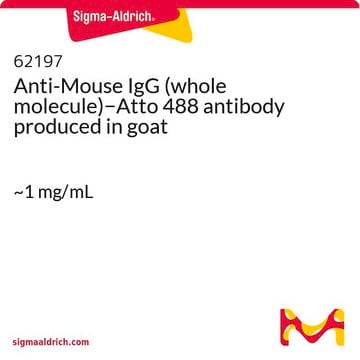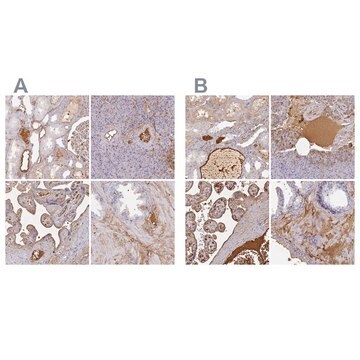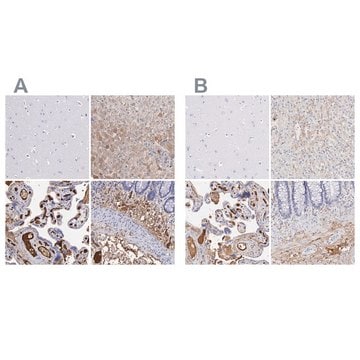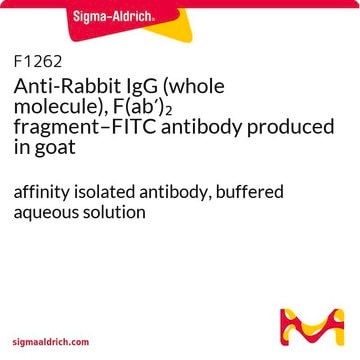18772
Anti-Rabbit IgG - Atto 488 antibody produced in goat
whole molecule, 1 mg/mL protein
Sinónimos:
Atto 488-[goat-Anti-rabbit IgG], whole molecule
About This Item
Productos recomendados
conjugado
Atto 488 conjugate
forma del anticuerpo
affinity isolated antibody
tipo de anticuerpo
secondary antibodies
clon
polyclonal
contiene
50% glycerol
reactividad de especies
rabbit
concentración
1 mg/mL protein
técnicas
immunocytochemistry: 1:500
immunofluorescence: 1:200
immunohistochemistry: suitable
fluorescencia
λex 485 nm; λem 552 nm in PBS
Condiciones de envío
wet ice
temp. de almacenamiento
−20°C
modificación del objetivo postraduccional
unmodified
Descripción general
Atto 488 is a labeling dye with high molecular absorption (90,000) and quantum yield (0.80) as well as sufficient Stokes shift between excitation and emission maximum. It is optimized for excitation with an argon laser, and is characterized by high photostability. Atto fluorescent labels are designed for high sensitivity applications, including single molecule detection. Atto labels have rigid structures that do not show any cis-trans-isomerization. Thus these labels display exceptional intensity with minimal spectral shift on conjugation.
Inmunógeno
Aplicación
Forma física
Nota de análisis
Información legal
Cláusula de descargo de responsabilidad
Not finding the right product?
Try our Herramienta de selección de productos.
Código de clase de almacenamiento
10 - Combustible liquids
Clase de riesgo para el agua (WGK)
WGK 3
Punto de inflamabilidad (°F)
Not applicable
Punto de inflamabilidad (°C)
Not applicable
Certificados de análisis (COA)
Busque Certificados de análisis (COA) introduciendo el número de lote del producto. Los números de lote se encuentran en la etiqueta del producto después de las palabras «Lot» o «Batch»
¿Ya tiene este producto?
Encuentre la documentación para los productos que ha comprado recientemente en la Biblioteca de documentos.
Los clientes también vieron
Artículos
Immunoblotting (Western blot transfer) is a common technique in modern proteomics research.
Nuestro equipo de científicos tiene experiencia en todas las áreas de investigación: Ciencias de la vida, Ciencia de los materiales, Síntesis química, Cromatografía, Analítica y muchas otras.
Póngase en contacto con el Servicio técnico









